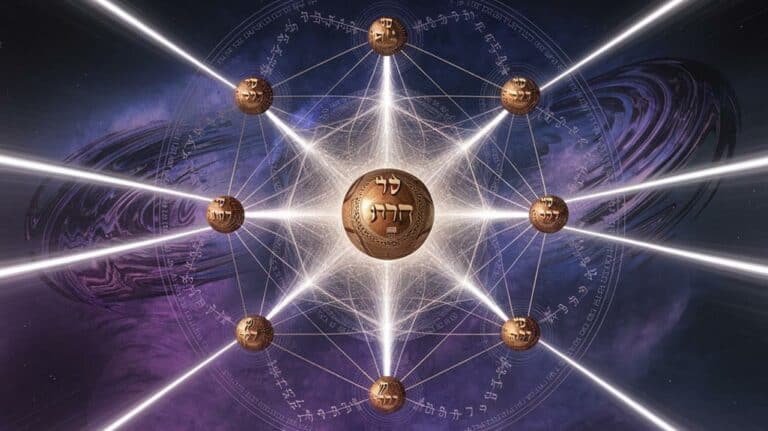7 Gnostic Gospels That Challenge Mainstream Beliefs
You’ve probably heard of the four canonical gospels, but there’s another set of ancient texts that tells a dramatically different story of early Christianity. These seven Gnostic gospels present alternative views of Jesus’s teachings that the orthodox church rejected – and in some cases, actively tried to destroy. From the Gospel of Thomas’s cryptic sayings to the Gospel of Mary’s feminist perspective, these controversial writings suggest that what you know about early Christian beliefs might only be part of the story. As you explore these lesser-known texts, you’ll discover why they’ve challenged mainstream Christian doctrine for nearly two millennia.
The Gospel of Thomas

The Gospel of Thomas stands as one of the most significant Gnostic texts discovered in the 20th century. Within its mysterious pages, you’ll find 114 sayings attributed to Jesus, many of which you won’t encounter in the canonical gospels.
As you explore this profound text, you’ll discover it doesn’t follow a narrative structure but instead offers a collection of wisdom teachings that challenge your conventional understanding of spirituality.
Unlike the traditional gospels you’re familiar with, Thomas doesn’t focus on Jesus’s death and resurrection. Instead, you’ll encounter teachings that emphasize self-knowledge and inner enlightenment as paths to salvation.
You’ll find yourself confronting provocative statements like “If you bring forth what’s within you, what you bring forth will save you.” This text suggests that you already possess divine qualities within yourself, waiting to be recognized and awakened.
The timing of Thomas’s composition remains debated, but you’ll find scholars suggesting dates ranging from 60-140 CE.
When you study this gospel, you’re engaging with a text that represents an alternative vision of early Christianity, one that emphasizes direct spiritual knowledge over institutional authority.
The Gospel of Mary
Discovered in 1896, fragments of the Gospel of Mary surfaced when archaeologists came across a 5th-century papyrus manuscript in Cairo. This revolutionary text offers you a glimpse into early Christianity‘s diverse voices, particularly highlighting Mary Magdalene‘s spiritual authority and wisdom.
You’ll find that this gospel challenges traditional hierarchies, presenting Mary as Jesus’s closest disciple and most profound interpreter of his teachings.
Within its pages, you’ll encounter Mary’s intimate conversations with the risen Christ, where she shares mystical visions and spiritual insights that the male disciples struggle to accept. The text reveals how she consoles and strengthens the other disciples after Jesus’s departure, demonstrating her deep understanding of his message.
You’ll discover passages that emphasize the soul’s journey toward spiritual liberation, transcending the material world’s limitations.
What’s particularly striking is how this gospel presents an alternative Christianity that values inner knowing over institutional authority. It’s an indication of the early church’s complex theological landscape, where women’s voices and mystical interpretations found expression before being systematically suppressed by orthodox Christianity.
The Gospel of Philip

Named after its core protagonist, the Gospel of Philip emerged from the Nag Hammadi library in 1945, offering a fascinating collection of spiritual teachings and sacramental interpretations.
You’ll find within its pages a profound exploration of mystical marriage, spiritual rebirth, and the sacred relationship between Christ and Mary Magdalene.
Unlike traditional canonical texts, you’re presented with a series of deep metaphysical teachings that challenge conventional Christian doctrine.
The text speaks of the “bridal chamber” as a spiritual concept, where you’ll discover transformative unions between divine and human nature.
You’ll encounter provocative passages suggesting Mary Magdalene’s special relationship with Jesus, describing her as his “companion” whom he often kissed.
As you investigate deeper into Philip’s teachings, you’re confronted with its radical interpretation of resurrection, which isn’t viewed as a future physical event but as a present spiritual awakening.
The gospel’s stance on material existence might shake your conventional understanding – it portrays the physical world as an imperfect reflection of divine reality.
Through its unique sacramental theology, you’re invited to transcend ordinary perception and embrace a more esoteric path to spiritual enlightenment.
The Secret Book of John
Among the most influential Gnostic texts, the Secret Book of John presents a radical cosmological narrative that diverges sharply from mainstream Christian teachings.
You’ll discover a complex mythological system that explains how the material world emerged from a transcendent divine domain, challenging everything you’ve been taught about creation and human origins.
As you explore this ancient text, you’ll encounter its central figure, Sophia, whose actions lead to the emergence of the Demiurge – a flawed creator god who mistakenly believes he’s the only divine being.
This revelation will transform your understanding of traditional religious hierarchies and power structures. The text reveals how your true divine spark remains trapped within material existence, waiting to be awakened through sacred knowledge.
You’ll find yourself confronting profound questions about consciousness, reality, and your own divine nature.
The Secret Book of John doesn’t just tell a story; it offers you a path to spiritual liberation through its intricate teachings about self-knowledge and cosmic truth.
It’s a text that continues to challenge conventional religious thought, inviting you to explore the depths of Gnostic wisdom.
The Gospel of Truth

In contrast to the Secret Book of John’s complex mythology, the Gospel of Truth presents a more accessible meditation on salvation through divine knowledge.
You’ll find this text deeply poetic, expressing how ignorance and error have trapped humanity in a state of spiritual amnesia. Unlike other Gnostic texts, it doesn’t overwhelm you with elaborate cosmological systems but instead speaks directly to your inner experience of awakening.
As you explore this gospel, attributed to the Valentinian school of Gnosticism, you’ll discover its central message: truth isn’t just information—it’s a liberating force that breaks the chains of illusion.
The text describes your spiritual journey as a process of remembering who you truly are, like someone awakening from a troubled dream. You’ll encounter powerful metaphors of light-piercing darkness, describing how divine knowledge illuminates your consciousness and sets you free from materialism’s grip.
The gospel asserts that you’re not just learning about truth; you’re experiencing a profound transformation as truth itself awakens within you, reconnecting you with your divine origin and purpose.
The Gospel of Judas
While the Gospel of Truth emphasizes spiritual awakening through knowledge, the Gospel of Judas offers a radical reinterpretation of Christianity’s most notorious figure.
You’ll discover how this ancient text transforms Judas from a betrayer into Jesus’s most trusted disciple, chosen to help fulfill a divine plan that transcends the conventional understanding of salvation.
In this provocative account, you’re invited to explore how Judas didn’t simply betray Jesus but rather assisted him in liberating his spiritual self from his physical form.
You’ll find that the text presents Jesus teaching Judas secret wisdom about the true nature of the universe, including revelations about divine domains and celestial beings that exist beyond our material world.
The gospel’s discovery in the 1970s and its subsequent translation in 2006 have challenged everything you’ve been taught about Christian orthodoxy.
Through its pages, you’ll encounter a different cosmic order where the God of the Old Covenant isn’t the true divine being but rather a lower, imperfect deity.
This understanding invites you to question established religious hierarchies and consider deeper truths about spiritual liberation.
The Apocryphon of James

Mystery shrouds the Apocryphon of James, a secret text purporting to contain private revelations from Jesus to his brother James.
You’ll find this Gnostic text challenges conventional Christian teachings by presenting a distinctive view of salvation through spiritual knowledge rather than faith alone. It’s a document that’ll make you question what you’ve been taught about early Christianity.
Within its pages, you’ll discover Jesus’ supposed teachings on martyrdom, prophecy, and the nature of spiritual understanding.
The text suggests you can’t achieve enlightenment through simple belief – instead, you’ll need to cultivate deep spiritual wisdom through contemplation and inner revelation.
What’s particularly striking is how it portrays Jesus sharing esoteric knowledge with James, suggesting a spiritual hierarchy that mainstream Christianity doesn’t acknowledge.
You’ll notice the text’s emphasis on self-knowledge and spiritual awakening differs markedly from orthodox Christian doctrine.
When you read about James being instructed to keep these teachings secret, you’re encountering a fundamental Gnostic belief: that spiritual truth isn’t meant for everyone, but for those who’ve achieved a higher level of understanding.









